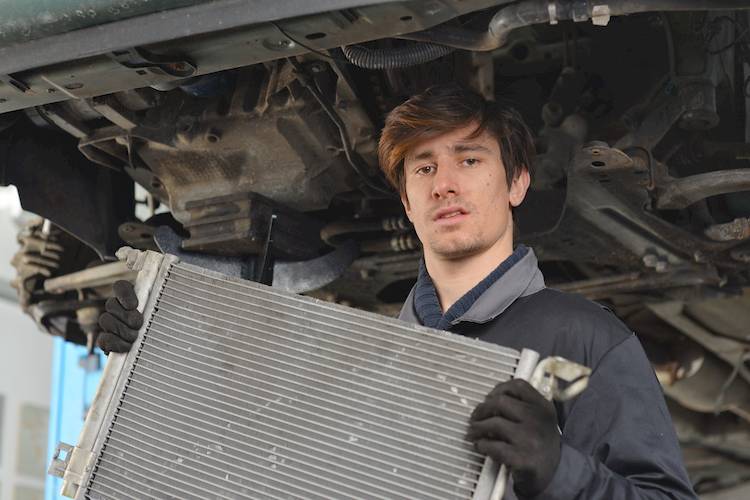

In order to operate safely, your car’s engine needs coolant and a way to disperse the heat the coolant absorbs. That’s where the radiator comes in. It’s a crucial component of your car. However, it’s not particularly strong. The design and construction required to make a radiator work also make it susceptible to flexing, bending and eventual breakage, so there has to be a way to hold it in place. That’s the job of a stay rod, also known as a radiator support.
Each make and model has a different number, size and configuration of stay rods for the radiator. They can be long or short. They can bolt to the frame, to a fender, or even to the firewall in some special cases. However, regardless of length or size, they all do the same thing – they hold the radiator in place and prevent it from flexing.
If the radiator were subjected to movement, it would quickly develop problems. First, it would constrict coolant flow through the interior, which would decrease cooling capabilities. Second, continued flexing would create weak spots in the body of the radiator. Eventually, these would turn into leaks, and the car’s engine would overheat.
A stay rod is in use every time you crank the engine (it’s actually in use constantly, but it really only sees stress when the engine heats up and when the car is in motion). Over time, the stay rod can wear. This primarily occurs at the mounting locations (where it attaches to the radiator and where the other end attaches). However, the rod itself can also be subjected to wear and tear. The good news is that this is rare to fail, and most are held in by dozens of spot welds. With that being said, welds can break and if enough come lose, then the stay rod won’t do its job.
If your radiator stay rod is damaged, it means that your radiator is in danger of experiencing damage as well. Obviously, you need to know a few signs to look for that indicate a stay rod might be about to fail (or have already failed). These include:
- The radiator moves a lot if pushed or pulled
- You notice coolant leaking from breaks in the radiator
- There’s a metallic rattling noise from the front of the engine bay
If you suspect that your stay rod or radiator support frame has been damaged or is about to fail, it is time to get it checked. A certified mechanic can inspect the system and replace the stay rod and any other components necessary (including the radiator if it is leaking).



